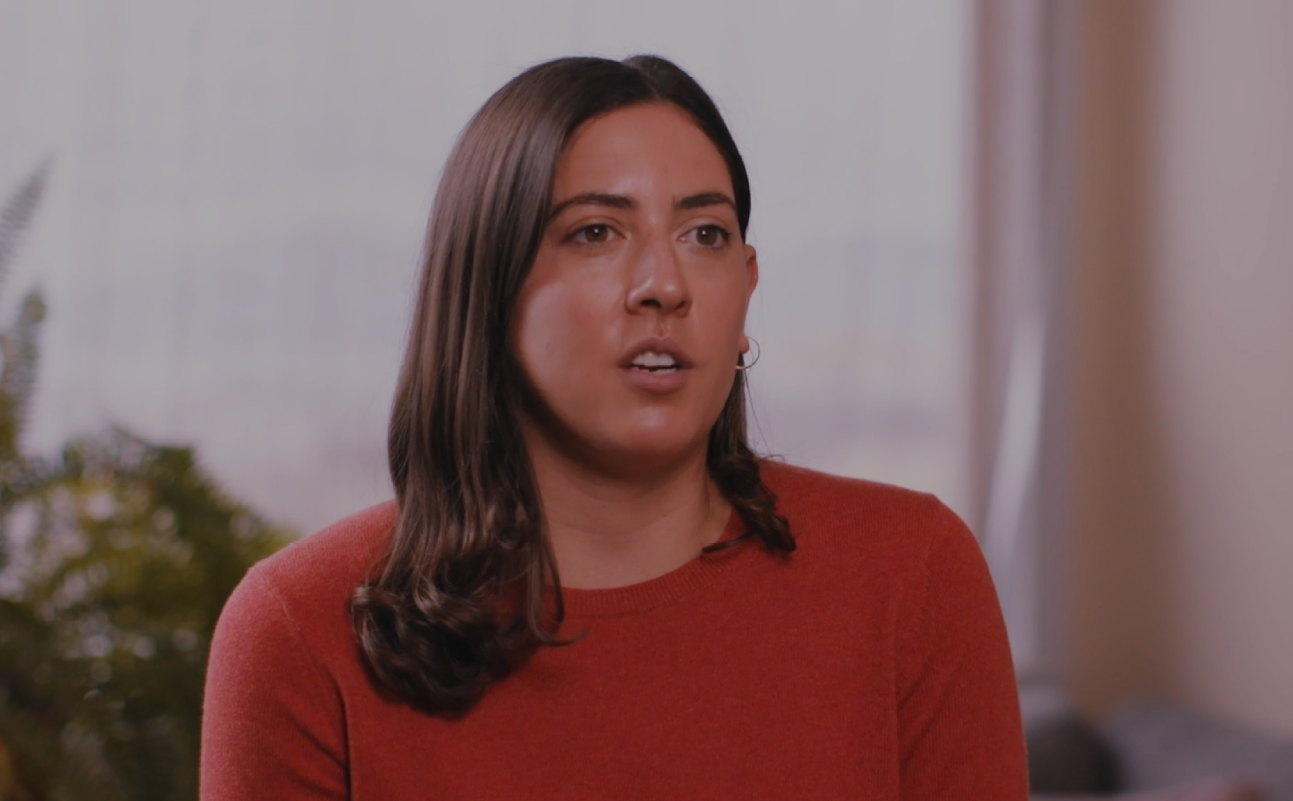
I live with VWD
What are the treatment options for von Willebrand disease? As a parent, how do I best care for my child with VWD? How do I find the best treatment for me? What does VWD mean for my family planning? Having VWD affects my social and family life: what can I do about it?
Living with von Willebrand’s disease (VWD) is a journey, and you are not alone. Regardless of whether you were recently diagnosed with VWD or diagnosed a long time ago, every step of your journey with VWD brings up new questions. Here, Prof. Corrales-Medina, Prof. Berntorp and their colleagues support you by answering some of the frequently asked questions about the disease, including questions about treatments, pregnancy and childbirth, and mental health. You will also find practical tips for a normal life with VWD.
Management of VWD
Management of VWD requires close partnership between you as a patient, or parent of a patient, and your doctor. Together you can develop an individualised treatment plan that considers your own unique needs and circumstances. An individualised management plan will minimise the risk of bleeding and help you maintain the best possible quality of life.1
Treatments for VWD
There are effective treatments for all types of VWD. Treatment choice should be tailored to the type of VWD you have, the severity and type of bleeding you have, as well as any other health conditions you may have. For most people with VWD, treatment is only needed during surgery or after trauma. People with more severe forms of VWD may require prophylactic treatment to prevent bleeding. To receive proper treatment, is it also very important that you inform you doctor about any medication you are taking because some drugs may interfere with the effectiveness and safety of VWD treatments. Generally, we recommend that you receive advice about which treatment is most suitable for you from a centre that specialises in bleeding disorders.1
Desmopressin is the first-line treatment for most patients. Desmopressin stimulates the release of stored clotting factors and is often used to treat type 1 and some type 2 VWD patients, but not patients with type 3 VWD. It raises VWF levels to help blood clotting. Desmopressin is often used to control bleeding during minor surgery or after trauma, but it is not suitable for all patients or during major surgery.1
Replacement therapy with VWF-containing concentrates is used when desmopressin is ineffective or not indicated. These concentrates replace the VWF that is missing in your blood or does not work properly to help control bleeding. People with certain types of VWD or people with severe bleeding symptoms are most likely to use VWF-containing concentrates. If you experience severe or frequent bleeding episodes, you may also benefit from regular prophylactic treatment with VWF-containing concentrates to prevent bleeding.1
In some scenarios, and in particular for patients with type 1 VWD, antifibrinolytic medications such as tranexamic acid are commonly used. These drugs slow the breakdown of blood clots, and are suggested for minor surgery, dental procedures, and to treat heavy periods and bleeding after childbirth. Fibrin glue can be also useful to seal a bleeding site, for instance after a tooth extraction. Whenever possible, the use of all these medications should be planned in advance and be part of a tailored treatment plan.1
Women with VWD often experience heavy menstrual bleeding (HMB) and bleeding around pregnancy and childbirth. Management options for HMB include hormonal therapies such as an intrauterine device that can sometimes reduce menstrual bleeding. If you are planning a family or are pregnant, we recommend that you consult your doctor as soon as possible. There are several treatments available for pregnant women with VWD. Your doctor will develop a management plan with you for a safe and healthy pregnancy and delivery.1
VWD may also affect the mental well-being, social interactions and quality of life of both children and adults.2-5 Symptoms such as HMB or joint bleeds are often associated with signs of depression and anxiety.2 Parents often worry about bleeding their children may experience, and children with VWD may be faced with problems at school or playing with friends because of the disease.5 To overcome these challenges, it is important that you have a strong social network and receive the right treatment and education from the doctors at your treatment centre.2,3
Surgery
People with von Willebrand disease (VWD) are more likely to experience excessive bleeding during and after surgery.1 Even patients with relatively mild forms of VWD report heavy post-operative bleeding that can last for a long time or reoccur.1 The risk of bleeding is not limited to major surgery, bleeding can also happen after minor surgical procedures, such as a tooth extraction.2 However, with the right treatment at the right time, the risk of excessive bleeding can be reduced both during and after surgery. 3,4
If you have VWD and are planning surgery, it is very important that you talk to your dentist or surgeon about your disease before the operation. Your doctor should then develop a management plan around the operation. The plan should be based on an accurate diagnosis of the subtype and severity of VWD, and on your bleeding history. This information will allow your doctor to understand your risk of bleeding during and after the surgery. The plan should also consider the type of surgery to be performed, as well as any other illnesses and medications. Together, this information is essential to guide treatment prior to, during and after surgery.1,2,4
To minimise the risk of bleeding during surgery, experts have developed treatment guidelines for both minor and major surgery in people with VWD. Depending on the type of VWD and the type of surgery, these guidelines describe what treatment you should receive to restore blood clotting, and for how long.3 For minor surgery such as simple dental extraction, you may need to receive treatment for up to 5 days.4 For major surgery, such as cardiac surgery, hysterectomy or a joint replacement, treatment should restore blood clotting before and for at least 3 days after surgery until the risk of bleeding decreases.3 For some types of surgery, such as knee replacement surgery in adults or tonsillectomy in children, it can take up to 2 weeks for the risk of bleeding to decline, and the management plan should be adjusted accordingly.4,5
Finally, you should also talk to your nurse or doctor about VWD if you need an injection. Receiving an injection just under the skin may help to avoid painful bleeding into the muscle, for example after a vaccination.2
References
1. Corrales-Medina FF et al. Blood Rev 2022; 101018.
2. https://www.nhs.uk/conditions/von-willebrand-disease/; last accessed March 2023.
3. Connell NT et al. Blood Advances 2021; 5:301-25.
4. O’Donnell JS & Lavin M, Hematology Am Soc Hematol Educ Program 2019; 604–609.
5. Patel PN et al. Int J Pediatr Otorhinolaryngol 2017; 100:216-222.
Pregnancy and childbirth
You can plan a family if you have von Willebrand disease (VWD). With appropriate medical attention, you can anticipate a successful pregnancy and a healthy baby. To make sure that you and your baby are safe, you should speak to your doctor if you are planning a pregnancy or are already pregnant. Your doctor will discuss with you the risks around pregnancy, prenatal testing and childbirth, and the possibility that your child may have VWD. You may also discuss past pregnancies, your personal and your families’ bleeding history, or any miscarriage you may have experienced. Based on your individual bleeding risk, your doctor will then make plans for a safe pregnancy and delivery.1-3
Such planning is necessary for women with VWD to minimize any potential risks which may occur during and after childbirth. In healthy women, levels of blood proteins called coagulation factors rise during pregnancy to protect the mother-to-be against excessive bleeding during and after childbirth. When compared to women without the disease, women with VWD often have lower levels of coagulation factors during pregnancy. Because of the changing levels of coagulation factors, the blood of pregnant women with VWD should be monitored regularly, in particular during the third trimester. If the levels of functional coagulation factors are too low, prophylactic treatment should be given during and after delivery. To further limit the risk of bleeding during and after delivery, your doctor may decide to work together with specialised haematologists or recommend that you give birth in a specialised hospital.1-3
It is possible that your unborn child will also have VWD. While most babies with VWD do not have problems with bleeding during delivery, it is important to be aware of the possibility so that the necessary precautions can be taken. Therefore, families in which one parent has severe VWD should be counselled not only about having a child with VWD, but also about the implications for pregnancy and method of delivery.1-3
Importantly, all these risks can be effectively managed with proper monitoring and a treatment plan for care before, during and after childbirth for you and your baby.3,4
References
- https://www.nhs.uk/conditions/von-willebrand-disease/; last accessed Feb 2023.
- https://www.cdc.gov/ncbddd/vwd/women.html; last accessed Feb 2023.
- Leebeek FWG, et al. Blood 2020; 136:2143-50.
- Janbain M and Kouides P Int J Womens Health 2022; 14:1307-13.
Mental Health
A bleeding disorder can have a tremendous impact on your life. The risk of bleeding may affect your physical health, your emotional and mental state, your behaviour, relationships with family and social life.1 The symptoms may restrict your daily activities, lead to concerns about the future, and make you feel insecure about intimate relationships. Often, these restrictions and concerns will also affect family members. The impact on quality of life can be even more pronounced if the bleeding disorder is undiagnosed, as is unfortunately often the case with von Willebrand disease (VWD).1-3 People with undiagnosed VWD do not have access to appropriate treatment and support. Without social support, patients with VWD often show signs of anxiety and depression.2,3 Even after the diagnosis is made, it is important to acknowledge that VWD remains a life-long condition with persistent challenges for patients, their families and their environment.
Parenthood brings along unique challenges for people with VWD. VWD and other bleeding disorders are hereditary diseases, and the diagnosis can have a severe impact on family planning. As parents of a child with a bleeding disorder, you may experience feelings of guilt and self-blame about the disease of your child. Moreover, the fear of bleeding may make you feel overprotective of your child and limit their social or sport activities. However, any protective measures need be balanced with the children’s freedom to explore and build confidence, which is important for your child’s development. A combination of simple protective measures, choice of appropriate activities and easy access to effective treatment can help you find this balance.2,4
Adolescence can be a particularly challenging time for people with VWD. As you take on more responsibility for managing your bleeding disorder, it is very important that you adhere to your treatment. Taking control of your disease yourself will not only reduce the risk of bleeding and pain, but will also give you confidence in your abilities and help you maintain good mental health and an intact social life.2,6
The mental health and quality of life of women with bleeding disorders is often strongly affected by their disease. If you have VWD, there is a very high chance that you also experience heavy menstrual bleeding (HMB). Blood loss and cramping can strongly interfere with everyday life, sports and other physical activities, and social and romantic interactions. HMB often also leads to lost time at school or work. Unfortunately, HMB is frequently met with dismissal and stigmatisation. Because of these limitations in activities and interactions and the lack of recognition, women with VWD often experience poor mental health with feelings of isolation, loss of accomplishment and low mood. Importantly, HMB can be treated, and treatment can improve the quality of life of women with VWD and HMB.4,5
One of the keys to limit the mental and social impact of your bleeding disorder is a strong support network. This can include your family and friends as well as social services and healthcare providers.3 If you feel low, anxious or depressed, also talk to your doctor or the specialists at your treatment centre about your feelings. They will be able to support you and guide you to the many helpful resources that experts have developed to protect the mental health of people with bleeding disorders. The staff at the treatment centre can also help you find psychologists and counsellors who are experienced in working with people with bleeding disorders. We also highly recommend that you reach out to a local patient group. There, you can discuss your experience, emotions and expectations around VWD and receive practical advice from fellow patients. VWD is a rare disease, but you are not alone, and help is at hand.
References
- van Hoorn ES, et al. Haemophilia 2022; 28:197-214.
- https://www.hemophilia.org/sites/default/files/document/files/nurses-guide-chapter-13a-child-development-with-bleeding-disorder-transition.pdf; last accessed Mar 2023.
- Roberts JC, et al. Haemophilia 2022; doi: 10.1111/hae.14725.
- VanderMeulen H, et al. Hematology Am Soc Hematol Educ Program 2022 1: 631-6.
- Sanigorska A, et al. Res Pract Thromb Haemost 2022; 6:e12652.
- McLaughlin JM, et al. Health and Quality of Life Outcomes, 2017: 15:67.
References
- Connell NT et al. Blood Advances 2021; 5:301-25.
- Roberts JC et al. Haemophilia 2022; doi:10.1111/hae.14725.
- Rae C et al. Haemophilia 2013; 19:385-91.
- De Wee et al. J Thromb Haemost 2010; 8:1492-9.
- De Wee et al. J Thromb Haemost 2011; 9:502-9.


